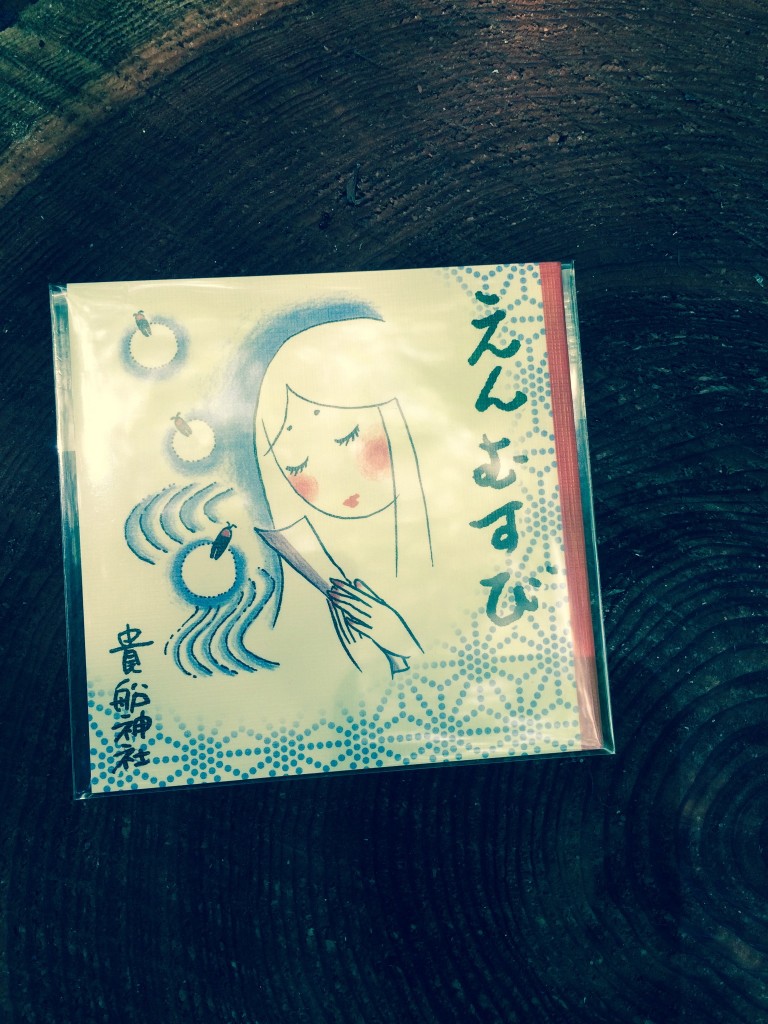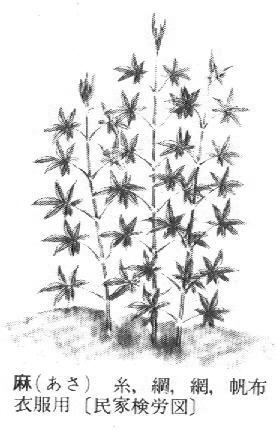
An advertisement for Kifune Jinja's enmusubi love connection, featuring the Heian-era poet Izumi Shikibu and the fireflies of which she wrote, but what's with the star-shaped pattern at the side and bottom? (thanks to Jann Williams for the photo and information)

The asanoha was a popular pattern for Edo-era kimono

Seeing patterns in hemp leaves (asa no ha). Courtesy 'Hemp in Japan' website
Those familiar with kimono and Japanese clothing will be aware that the above patterning is not related to the stars but to hemp, for it was often used as a traditional decoration on material. It consists of six diamond-shaped patterns in a radial manner. The shape is said to resemble the leaf of the hemp plant and is known as asanoha (hemp leaves). (According to this dedicated hemp site, the regular geometric pattern represents overlapping hemp leaves.)
In ancient Japan, hemp was one of the materials used for making clothing, fibers and paper. These valuable commodities were used in offerings at shrines, and the hemp plant had auspicious connotations because of its rapid growth and persistence against adversity.
In Edo times the plant featured on the clothes of newborn children, to hasten their rapid growth. It also benefited in kimono terms from being an all-year round pattern, rather than being seasonal related.
Until 1948 hemp could be grown by anybody, anywhere in Japan, without any legal restrictions. Then the American Occupation authorities passed a Hemp Control Law, which required a government license for anyone wanting to cultivate the plant. It is still grown officially though in limited and carefully controlled amounts, amongst other reasons for sacred purposes in Shinto and sumo.
In Shinto hemp fibre is used for making white paper and rope hangings, as in ceremonial use of shide and gohei. It’s said too that the holes in 5 and 50 yen coins derive from having been hung on hemp strings in the past, because the fibre was so durable.
******************************************
For more on hemp, see here. For cannabis connections, see here.
******************************************

Shide (white paper strips) tied to a hemp string (courtesy Hemp in Japan)

Leave a Reply